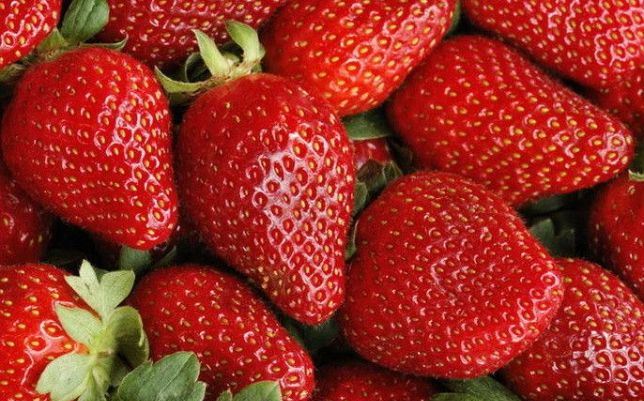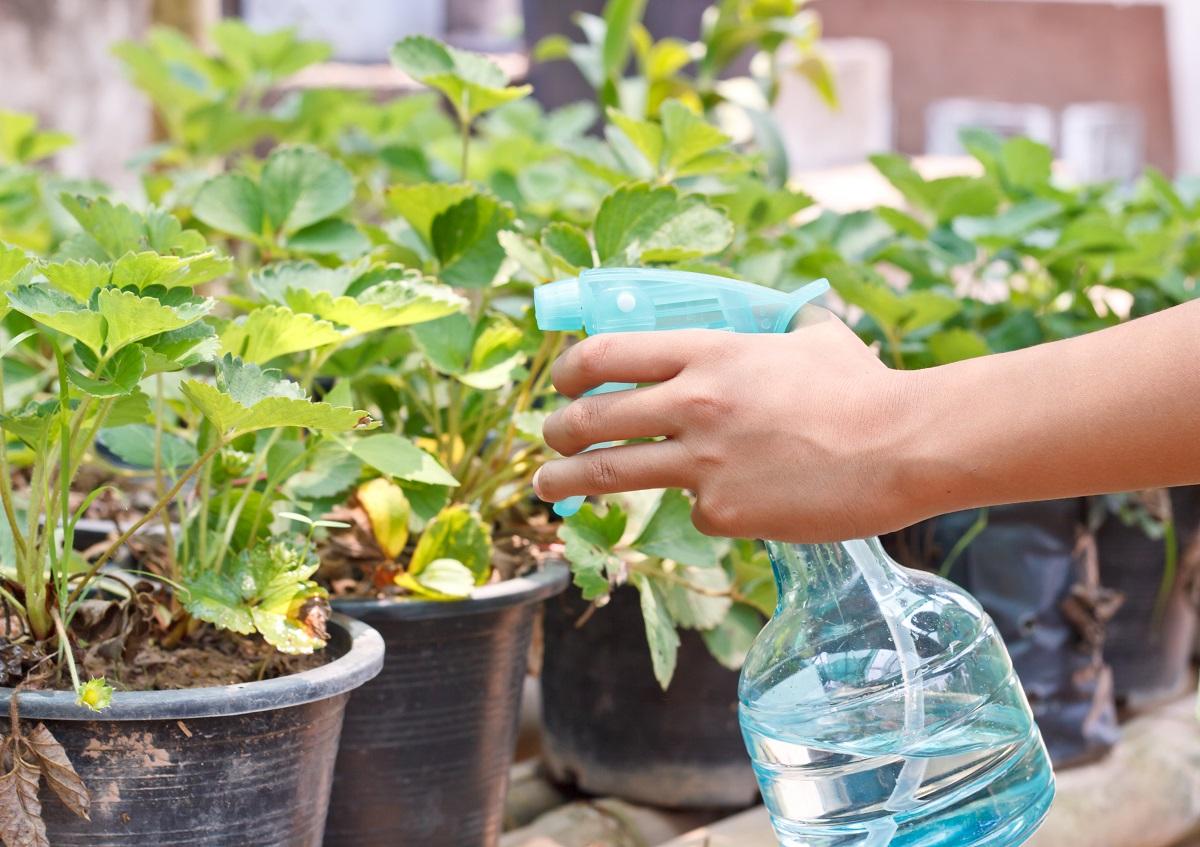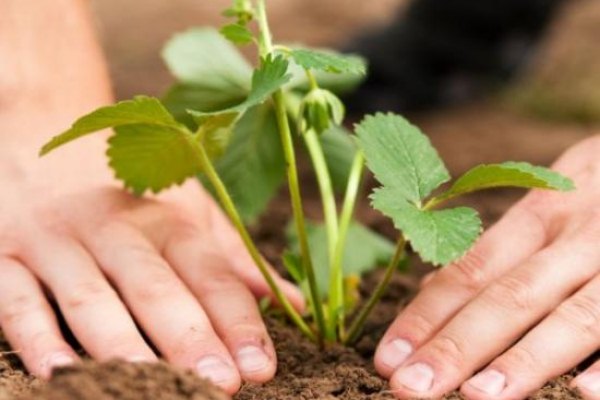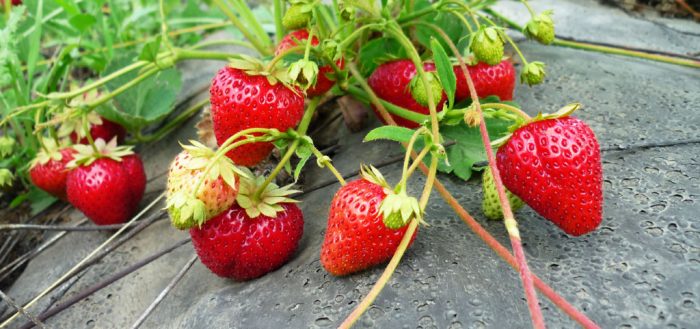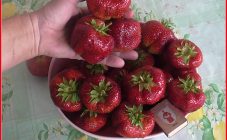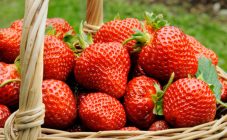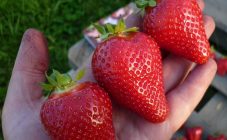Content:
Strawberries are a favorite treat for children and adults alike, everyone is looking forward to the onset of strawberry paradise. It is the Alba strawberry that opens the season, delighting with large, beautiful and tasty berries.
The history of the creation of the variety, subspecies of the variety and popular names
Since the 18th century, scientists began to call nutmeg strawberries (Fragariamoschata) strawberries. This berry has many names, among them is the garden strawberry. In the XX century, the false berries of the garden strawberry (pineapple) were called strawberries. While pineapple strawberries originated from Virginia strawberries, and not from garden strawberries. The berry, which appeared in Europe in the 18th century, was a hybrid and differed in large fruits from the garden strawberry.
The Alba variety appeared in 2003. The specialists of the NewFruits company from Italy, engaged in selection, were faced with the task of creating a variety with a high yield, good transportability, long shelf life, and excellent berry taste. By crossing two varieties Albion and Cal. 97.85-6 a hybrid NF311 or - Alba variety with the required characteristics was bred. The popularity of the variety grew rapidly and by 2005 Alba had spread widely throughout the countries of the former Soviet Union.
The varieties Asia, Syria, Roxana, developed by the Italian company, are intended for cultivation in warm climates, while the Alba variety is suitable for continental climates.
Characteristics and features of the variety
The main feature is considered early flowering and ripening of berries, these indicators rank it as early, and sometimes ultra early. This is not a remontant grade. High weight, fruit appearance, transportability, keeping quality, high yield, resistance to diseases are attractive.
Fruit characteristics
Small fruits appear at the end of this period. The pulp is dense, juicy, with sourness. The shape of the fruit is conical, narrowed at the bottom.
Plant parameters
- Bushes are powerful, vigorous, with dense foliage.
- The height of the bush reaches 30 - 35 cm.
- The number of leaves is average. The leaves are large, bright green, do not have a tendency to spotting.
- Peduncles often do not support the weight of the fruit, sagging to the ground.
The immunity of the variety to fungal diseases is quite high. Landings are often sick with anthracnose, which is caused by high humidity. Small gray-burgundy spots appear on the leaves, they increase over time. The appearance of spots should serve as a signal to start treating the plants with special preparations, otherwise the berry will die. When the first signs of illness appear, the plantation is treated with special preparations.
For prophylaxis, the seedlings are kept in a solution of Bordeaux liquid or manganese-sour potassium for several minutes before planting. To destroy the pests that often attack strawberries - aphids, weevils - spraying with special preparations or an aqueous solution of soap is used.
The variety is cultivated in open ground and under a film cover.
The attractive appearance of the fruits, excellent keeping quality, versatility of use increase the purchasing power of the variety and serve to widespread the berries in summer cottages.
Features of agricultural technology
To enjoy the harvest, Alba strawberries need to be planted in well-lit areas. Where raspberries or vegetables of the nightshade family (peppers, potatoes, tomatoes, eggplants) grew before, strawberries should not be planted. Cabbage and cucumbers with strawberries have common diseases: stem nematode and verticillary wilting, after these vegetables, strawberries are also not planted.
The area where they grew will be suitable:
- garlic;
- bow;
- carrot;
- beet.
Well-prepared land is one of the important conditions for obtaining decent harvests. The soil requires fertile, breathable, slightly acidic, which retains moisture well. Loamy and sandy loam soils containing organic matter are better suited. First, they dig up the site, while carefully choosing the roots of weeds. Simultaneously make 1 sq. m 50 g of complex fertilizer or 0.5 cups of ash and 30 g of superphosphate and a bucket of humus.
It is advisable to sow the area prepared in spring with green manure plants (mustard, lupine) in order to avoid the appearance of weeds during the summer. The area for strawberries is chosen even so that there is no lack of water in dry weather.
With a high location of groundwater, high beds are organized in order to avoid root rot and the appearance of diseases on the berries. Usually strawberries are planted in two rows with a distance of 30 - 40 cm, and between bushes 20 - 30 cm. The planting of this variety does not differ from others. Fertilizers, ash, humus are applied to the holes, watered. The bush is placed in a hole, spreading the roots and compacting the soil. Watering again.
The center sprout-heart should be at ground level. Planting time greatly affects the future harvest. Spring: late April - early May; in summer they begin from mid-July, finishing two weeks before frost.
Reproduction (mustache, dividing the bush, seeds)
The Alba variety can multiply in several ways. The most convenient and simplest method of reproduction is a mustache. Somewhere in June, they choose a powerful mustache from strong productive bushes, using only the first rosettes closest to the mother. They are planted in separate cups with moist soil, pinned, attached to the ground. All other whiskers and processes with rosettes of the second and third order are removed. It is watered daily, when the roots get stronger and 5 - 6 leaves appear, the new plant is separated from the mother bush, together with the lump they are planted in the garden.
The Alba variety is planted in the ground all season, from early spring to late autumn. Breeding by dividing the bush is carried out as with other varieties. Time is limited by the beginning of frost so that the bushes have time to take root. Excellent germination of seeds of this variety allows propagation of the variety by seed method.
Seedling care is normal. Seedlings are planted on the beds when they grow up to 5 - 7 cm tall. The harvest from such bushes will appear in a year.
Care (watering, feeding)
Watering is carried out only when the soil dries out, avoiding waterlogging and stagnant water. To maintain soil moisture, mulch (from straw, hay) or non-woven material is used. The same effect is given by the constant loosening of the earth, it also enriches the earth with oxygen.
Strawberries are fed three times a season:
- 1st feeding - at the beginning of the growing season;
- 2nd - in the middle of the growth period;
- 3rd - at the end.
Advantages and disadvantages of the variety
The advantages of the variety include:
- early ripening, bountiful harvest;
- long fruiting period;
- preservation of the presentation of the berries when they are on the bushes for a long time;
- drought resistance, frost resistance, immunity to diseases;
- high portability;
- grows in open ground and greenhouses.
- The disadvantages are susceptibility to anthracnose, lodging of peduncles from the weight of the berry and their insufficient sweetness.
The description of the Alba strawberry variety is quite common; experts and amateur gardeners give ambiguous assessments. However, it is possible to feast on berries earlier than other varieties. This gives Alba the right to live on the site and delight with her gifts.
